Explainer: The TPI System’s New Ambient Air Pressure Sensor
In 2018, KTM and Husqvarna first released their fuel-injected two-stroke enduro models. Using KTM’s patented Transfer Port Injection (TPI) technology, these revolutionary machines offered a bunch advantages over their carb-fed predecessors – such as automatic compensation for altitude and temperature, better fuel economy, reduced emissions, easier starting, smoother idling and improved rideability. Plus, they made pre-mixing your fuel with oil a thing of the past. These new-gen two-strokes sold like hotcakes. And within a year, the 300cc fuel-injected machines became both brands’ biggest-selling model in several markets around the world, Australia included.
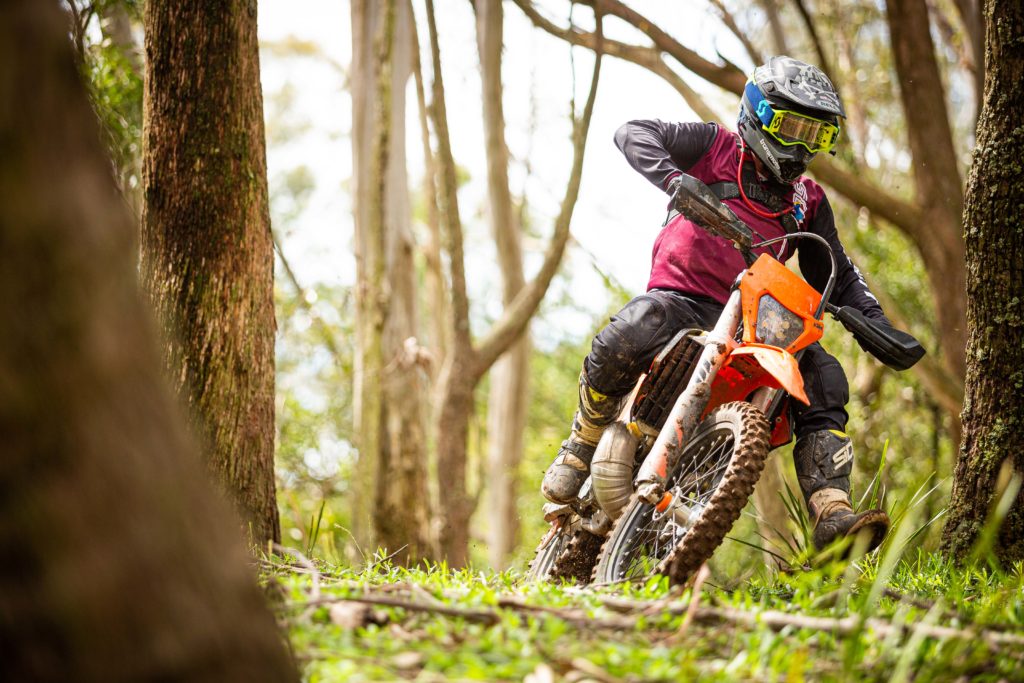
But, as is the case with any new technology, there have been some teething problems with the TPI – some of them inherent in the TPI technology itself; and some of them a result of consumers not yet adapting to, or understanding, the idiosyncrasies of a TPI engine. To help address some of these idiosyncrasies (such as irregular fuelling at a constant throttle setting, and the ECU’s inability to adjust to fast-changing parameters in real-time), the Austrian factory’s R&D department now has a taskforce dedicated to constantly evolving the TPI bikes’ mapping (rather than just updating maps annually for the new year-model).
For the 2018 and 2019 TPI bikes, the factory released a series of updated maps (you may have heard people refer to “generation 3, 5, 7 or 9 maps”) – most of which improved the ability of the system’s fuelling and ignition to adapt to its environment, albeit subtly. But the most significant improvement came on the 2020 models, which were fitted with an all-new ambient air pressure sensor.
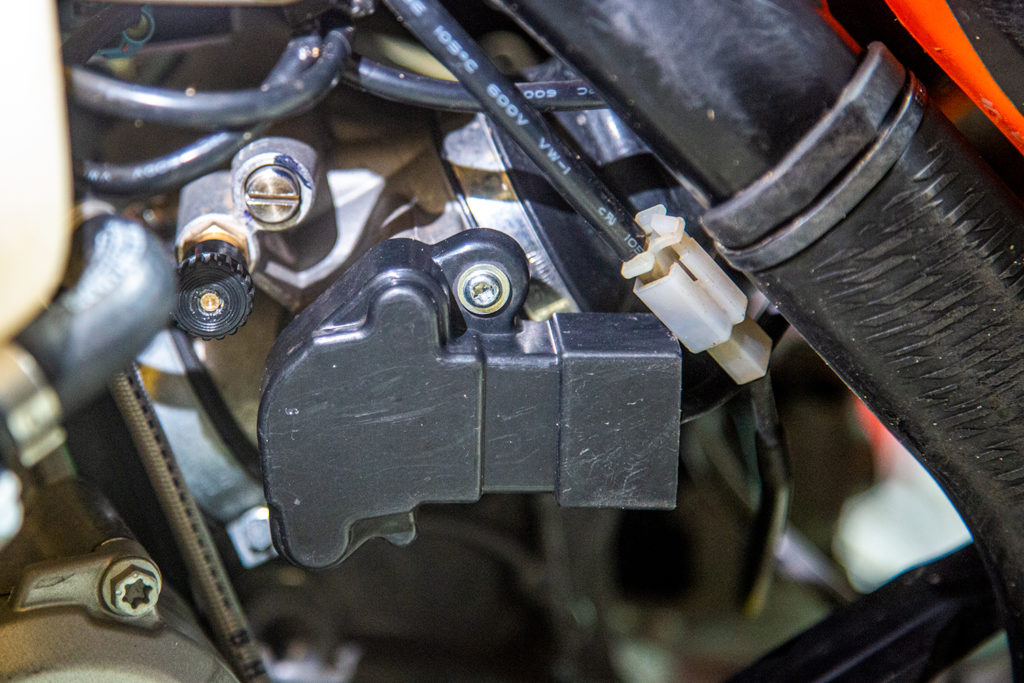
Admittedly, the powerplants on these 2020 TPI bikes also got other mods – such as more compression, sweeping changes to the exhaust systems, refinements to the cylinder’s exhaust port and power-valve, and more consistent settings for the throttle body’s butterfly (along with their engines being tilted forward in the frame to put more weight on the front wheel for a more planted feel in turns). But the addition of this new ambient air pressure sensor has arguably had the biggest overall impact on the TPI engines’ overall performance.
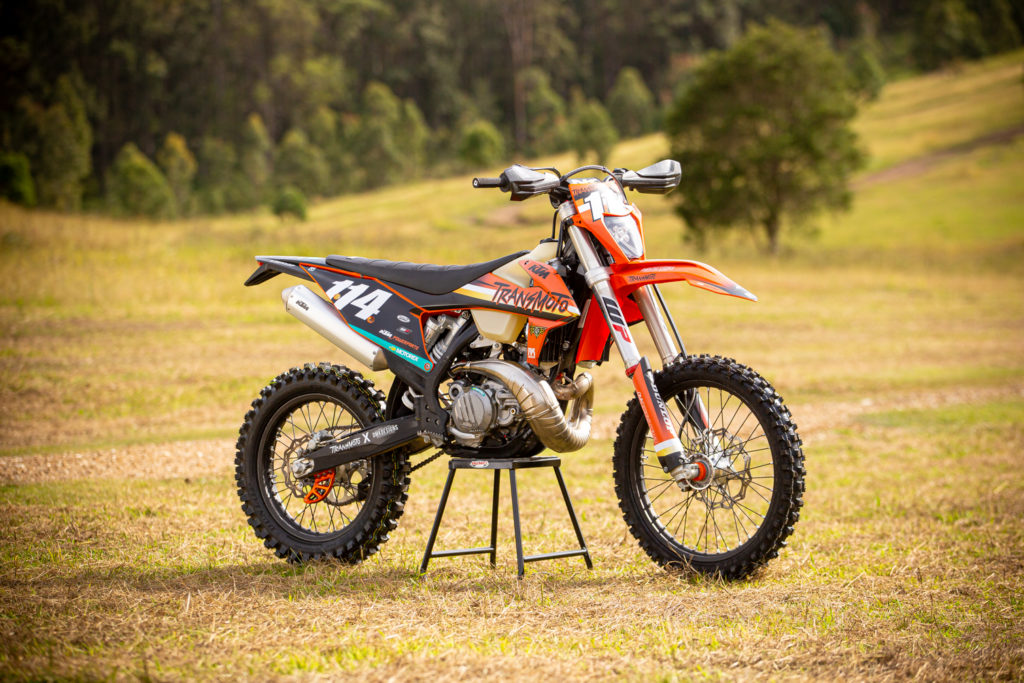
So, how has this new sensor improved the TPI models’ fuelling and power delivery for 2020? As a 2020 KTM 250EXC TPI has been on Transmoto’s project bike fleet for six months, we can now answer that question. But before we do, let’s revisit some background to the TPI two-strokes’ new ambient air pressure sensor and how it works…
UNDERSTANDING THE EMS, ECU & THE CHANGES FOR 2020…
According to the Austrian factory, “The 2020 TPI models feature the most modern engine management system (EMS) of any two-stroke off-road competition motorcycle.” The brain of the system is the electronic control unit (ECU) located below the seat. It’s the black box heart of the EMS and controls the ignition timing and the amount of fuel injected by using sensor data – such as intake air pressure, throttle position and coolant temperature. A new and additional sensor (the ambient air pressure sensor) for the 2020 TPI models is designed to enable the ECU to adapt the injection parameters to fast changes in altitude. But according to the factory’s mapping guys, this all-new sensor did more than simply improve altitude adaptability; it was also “an enabler that let us make a really big improvement to the 2020 models’ mapping and power delivery”.
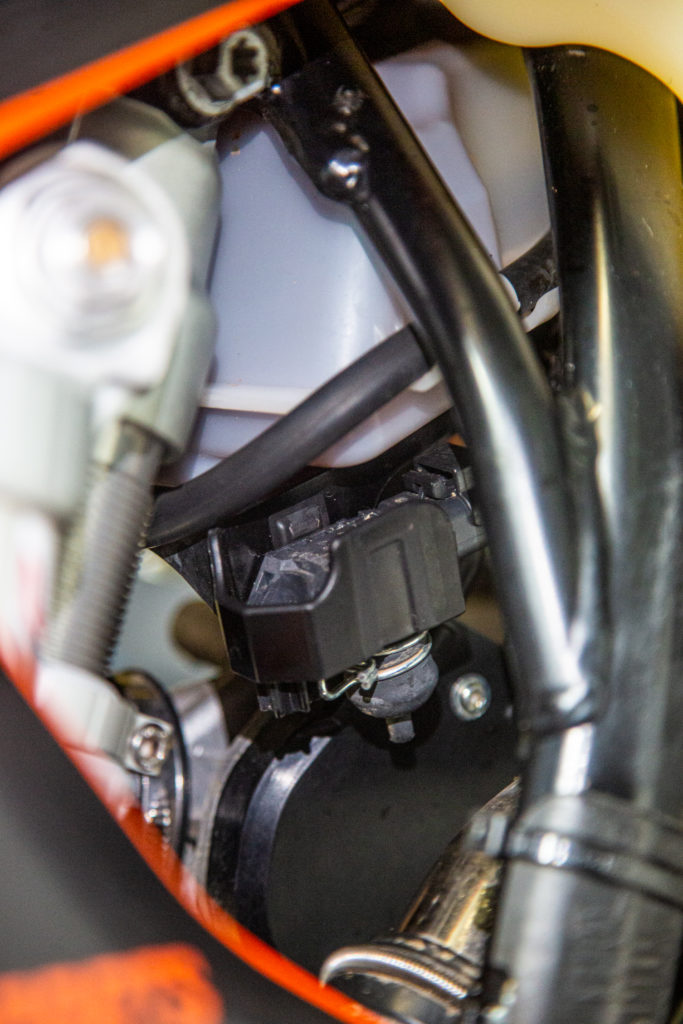
WHAT IS THE NEW AIR PRESSURE SENSOR?
All EMS systems – for two-strokes and four – need a sensor that measures altitude or ambient air pressure to calculate the correct values for injection and ignition. On four-stroke models, it is calculated by the manifold pressure sensor, which gives a reliable measurement of ambient air pressure. On KTM/Husky’s 2018 and 2019 two-stroke models, however, the only air pressure sensor the system used was the crankcase pressure sensor. And that proved to be an unreliable way to measure ambient air pressure in some circumstances.
WHICH IS WHY WAS AIR PRESSURE SENSOR INTRODUCED, RIGHT?
Right. The crankcase pressure sensor was not always an accurate way to calculate the ambient air pressure at certain RPMs and load parameters, especially with drastic changes in altitude (for instance, spearing the bike up a steep hill for 10 minutes). That’s why, for the 2020 models, this all-new and additional ambient air pressure sensor was fitted. It’s mounted under the oil reservoir, and is solely responsible for detecting the ambient air pressure and delivering that signal to the ECU.
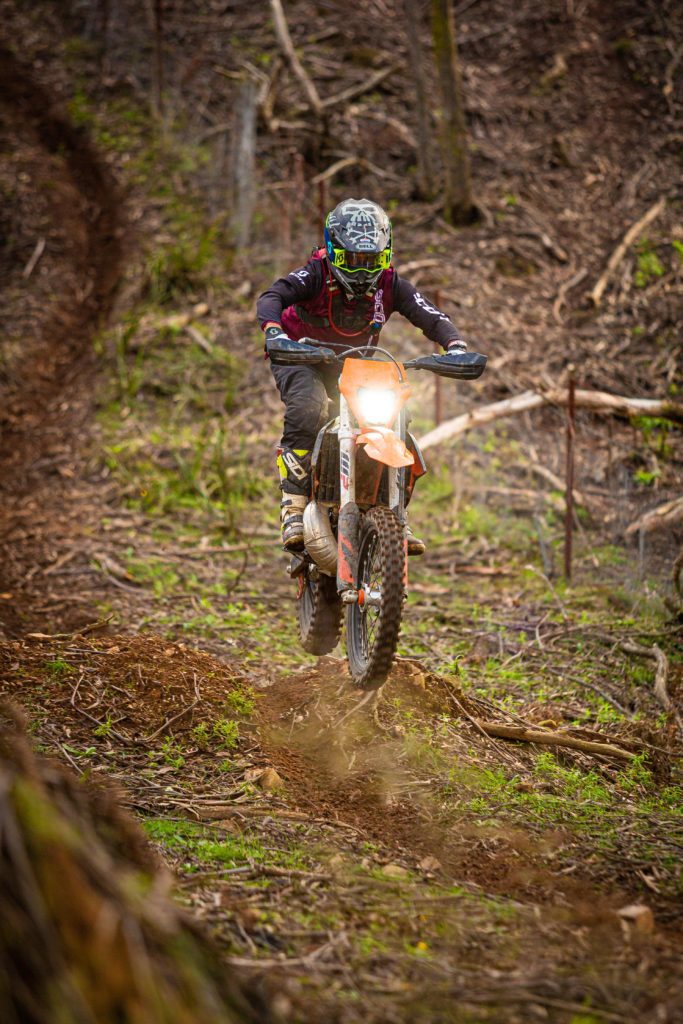
WHAT ARE ITS CLAIMED BENEFITS?
By delivering accurate ambient air pressure signals to the ECU, this additional sensor is designed to allow any compensation for fuelling and ignition timing to be made in ‘real-time’. In other words, it lets the engine calibrate to different conditions much quicker and more precisely than their predecessors did; thereby creating a much more sophisticated and responsive system. For example, the 2018/19 TPI models would often run poorly after a drastic change in altitude (in which case, you’d often have to turn the bike off, let it sit for 10 seconds, and then start it up again with no throttle – all to let the ECU recalibrate the mixture to the new altitude), whereas the 2020 models are capable of adjusting themselves along the way.
WHAT DO WE RECKON?
The most obvious improvement over the 2018/19 models is the bike’s fuelling at slow speeds and low revs. When you’re ducking in and out of the trees, the throttle response and power delivery are now way more consistent. The power is crisper off the bottom and transitions more smoothly into the mid-range. And that makes the bike more predictable and easier to ride in technical terrain, where you’re constantly on and off the throttle. The 2020 TPI bikes’ fuelling at a constant throttle is still a little irregular, but feels nowhere near as unusual as it did on the 2018/19 models – the 250cc models, in particular (though, to be fair, this improvement also has a lot to do with the 2020 models’ new CNC machined exhaust ports to ensure they’re all set at the same height). That makes the 2020 bikes much more effective in situations such as hillclimbs or long sweeping turns on a big grasstrack, where you’re holding the throttle at a constant opening.
‘SAMPLING ITS ENVIRONMENT’?
With these fuel-injected two-strokes, it’s important to understand that the TPI system only ‘learns’ at start-up and while the engine is idling (it is also important that the bike is started with no throttle, whether it’s hot of cold). This is the only time when the bike can it sample its environment and calibrate the ECU accordingly. So when you get to the riding area (especially if you live at sea level and drive a fair way from home to ride at a different altitude), it’s advisable to start the bike and let it idle for a while so it has the opportunity to sample that new environment’s parameters.
MORE ON THE TPI MACHINES
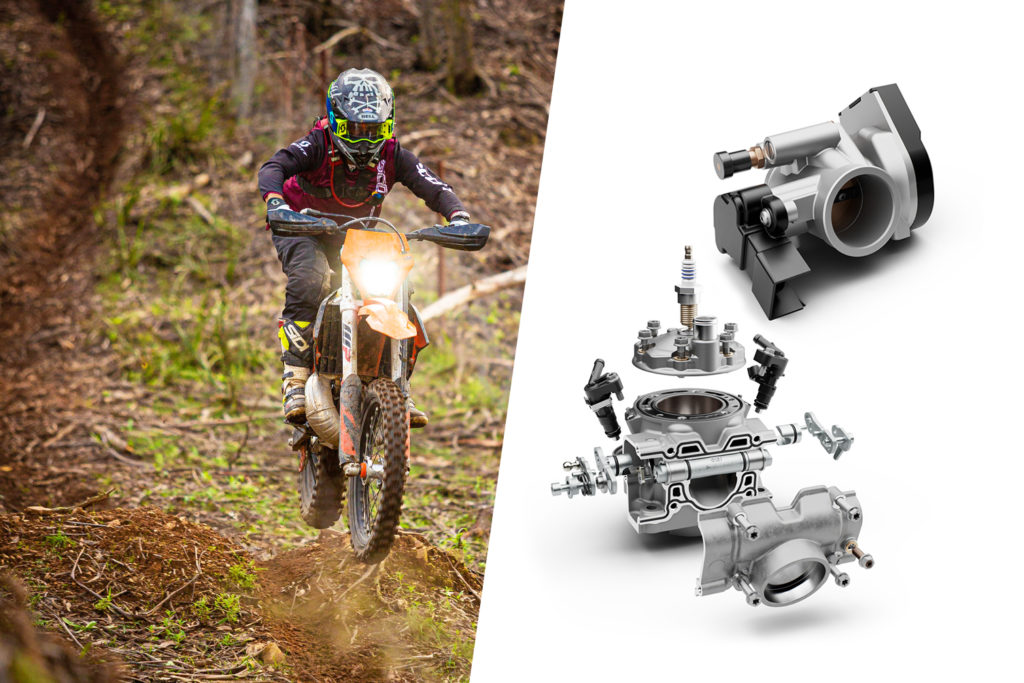
EXPLAINER: TPI MODELS’ COLD-START & IDLE ADJUSTER
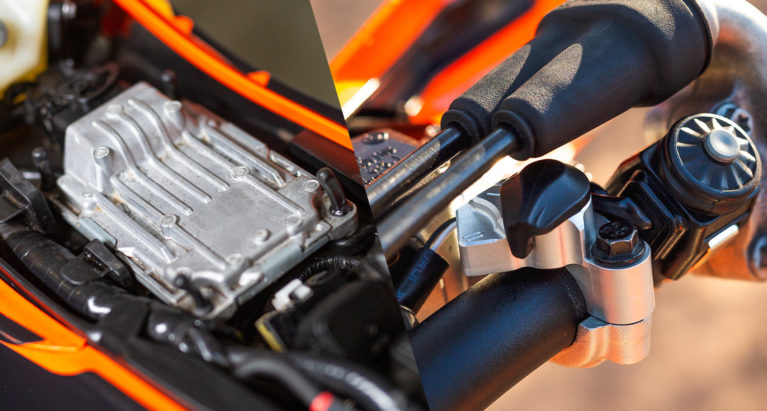
TPI MODELS: MAP NAMING PROTOCOLS
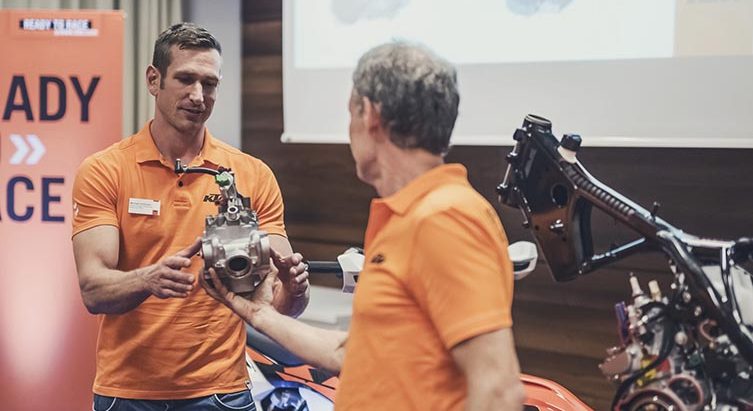
KTM TWO-STROKES: ENGINE DEVELOPMENT
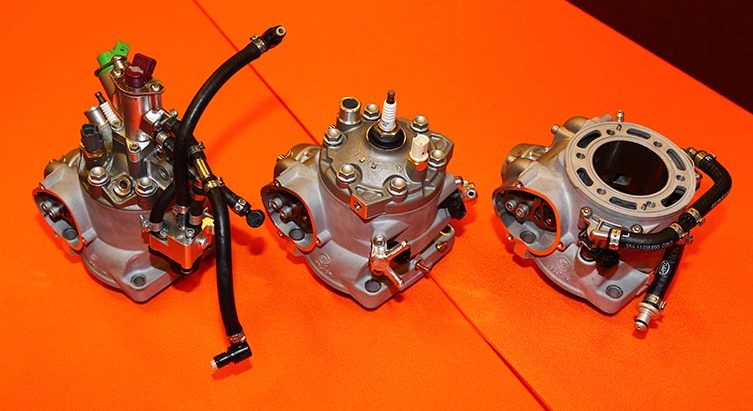
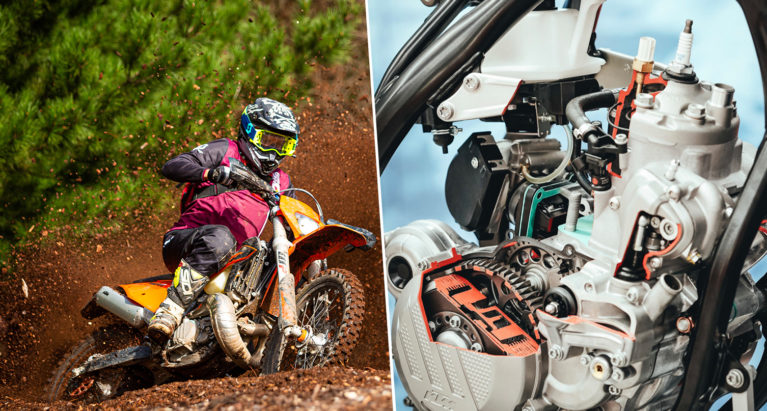








Be the first to comment...